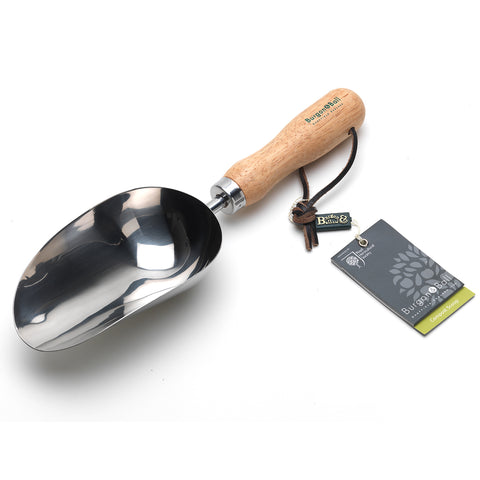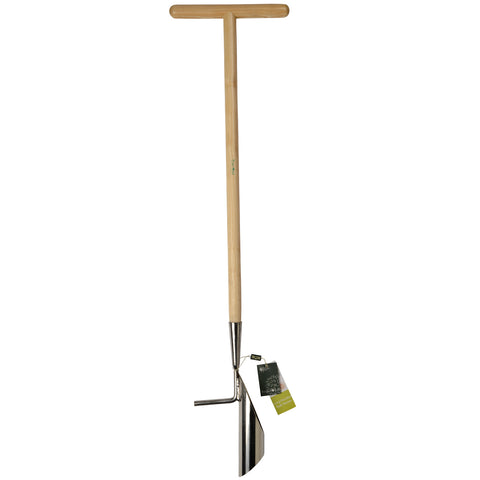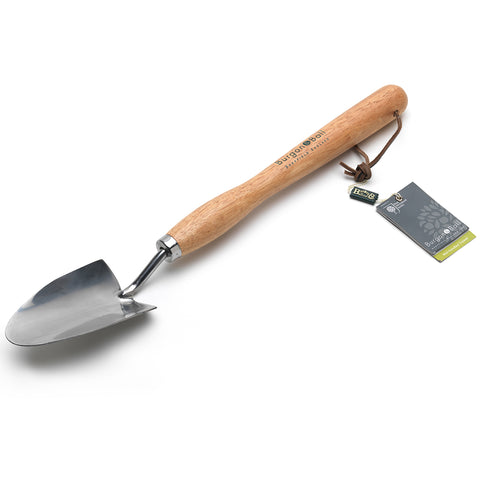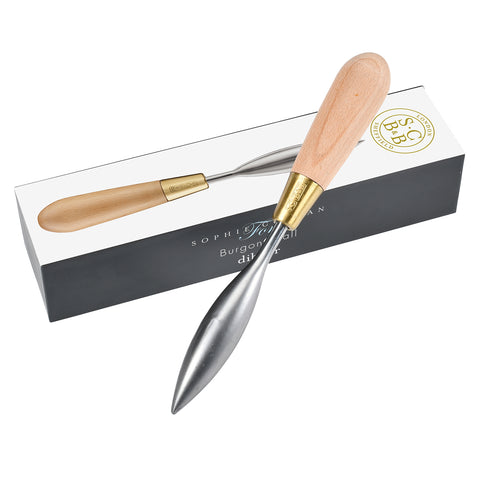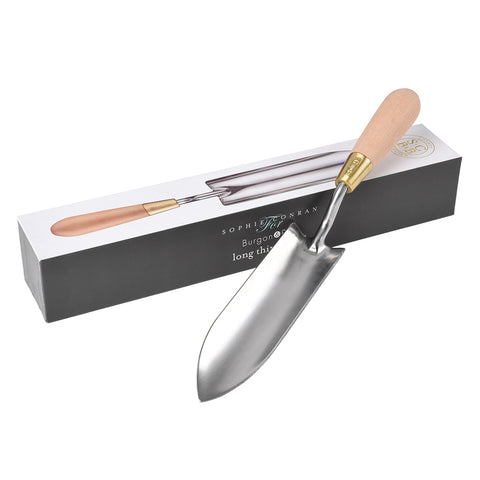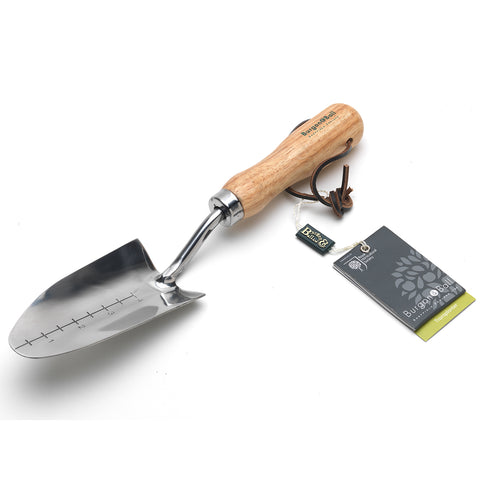 Autumn is where next year’s garden starts! It’s an exciting time – dreaming of next year’s colour palette, the complementary tones, the contrasts, the pops of colour… there’s no doubt that gardening is a creative pursuit, and painting with living colour has to be one of the most pleasing parts of it.
Autumn is where next year’s garden starts! It’s an exciting time – dreaming of next year’s colour palette, the complementary tones, the contrasts, the pops of colour… there’s no doubt that gardening is a creative pursuit, and painting with living colour has to be one of the most pleasing parts of it.
And bulbs are a key part of any garden’s year. We adore spring bulbs, even if they can become a little addictive! We can’t resist taking a sneaky peek into every bulb catalogue which crosses our path. Flowering much earlier than other plants, not only do they give us the welcome sight of bright petals in the garden after winter’s dark days, they’re also a hugely valuable source of pollen and nectar for early pollinators. There’s something almost magical about these flower grenades that we pop into the soil, ready to surprise us with their beauty months later.
So don’t miss out on this fabulous autumn ritual, start choosing your bulbs today. And if you’ve already planted some – plant some more! Here are our top tips for getting the most out of your bulbs, for a spectacular show next spring.
 Timing – Spring bulbs need time to establish a strong root system this autumn, before the ground gets too cold. So it’s only fair to give them a fighting chance. Most spring bulbs need to get in the ground in September or October. Wait until November for tulips, though, as they are susceptible to a fungal disease called tulip fire, which causes the flowers and leaves to look like they’ve been scorched. Planting tulips late is a traditional means of protection from the disease, as the cold weather stops the virus in its tracks.
Timing – Spring bulbs need time to establish a strong root system this autumn, before the ground gets too cold. So it’s only fair to give them a fighting chance. Most spring bulbs need to get in the ground in September or October. Wait until November for tulips, though, as they are susceptible to a fungal disease called tulip fire, which causes the flowers and leaves to look like they’ve been scorched. Planting tulips late is a traditional means of protection from the disease, as the cold weather stops the virus in its tracks.
Quality – Buy the best you can afford. Bulbs are like batteries of stored energy, with next year’s flower already full formed inside and waiting for the perfect moment to burst forth into fantastic flower. And put simply, bigger is better. Bulbs are graded by size, and with bulbs categorised in centimetres of circumference. Only the largest, highest-quality bulbs can be described as ‘top size’. Top-size tulip bulbs, for instance, must be at least 12cm in circumference.
Quantity – In a nutshell, go big or go home! If a thing’s worth doing, it’s worth over-doing, so plant as many bulbs as you can. Who doesn’t dream of swathes of colour, flowers bursting from every corner? It’s lovely to fill multiple containers too, as they can be moved about, with each pot moving forward to take centre stage as it hits its peak. Informal groups of bulbs give a natural look, and stick to odd numbers: 3, 5, 7 or 9 bulbs. We like to throw a handful of bulbs and plant them where they fall. The RHS recommends at least 25-50 bulbs for an impressive show and many gardeners go into three figures, so this is no time for parsimony: ‘meagre’ is not the look you’re aiming for.

 Planting – As a rule, plant bulbs two to three times as deep as the bulb is tall. So if your bulb is two inches in height, you need a hole four to six inches deep. However, if your site is particularly exposed, there’s no harm in planting them deeper for extra frost protection, and it’s often the case that deeper-planted bulbs are more likely to flower again the following year. Bulbs hate to stay wet and can rot over the winter, so always add a layer of loose compost below the bulbs, and in heavy soils, add a generous handful of grit as well to help with drainage. Adding some high-phosphorus feed to the base of the planting hole will give your bulbs a flying start at they start to establish their roots this autumn. Traditionally bone meal was used, and this is still available; other commercial bulb food is also available at garden centres and online. Try to plant them the right side up – the top is pointy, the bottom is more rounded and may have wispy roots attached. But it doesn’t matter too much if you’re not sure which end is which. If you lay them on their side, they’ll still find which way to grow.
Planting – As a rule, plant bulbs two to three times as deep as the bulb is tall. So if your bulb is two inches in height, you need a hole four to six inches deep. However, if your site is particularly exposed, there’s no harm in planting them deeper for extra frost protection, and it’s often the case that deeper-planted bulbs are more likely to flower again the following year. Bulbs hate to stay wet and can rot over the winter, so always add a layer of loose compost below the bulbs, and in heavy soils, add a generous handful of grit as well to help with drainage. Adding some high-phosphorus feed to the base of the planting hole will give your bulbs a flying start at they start to establish their roots this autumn. Traditionally bone meal was used, and this is still available; other commercial bulb food is also available at garden centres and online. Try to plant them the right side up – the top is pointy, the bottom is more rounded and may have wispy roots attached. But it doesn’t matter too much if you’re not sure which end is which. If you lay them on their side, they’ll still find which way to grow.
Be space-savvy – There are all kinds of ways to cram extra colour into your display. You’ll often see tulips underplanted with wallflowers to give a sea of fragrant colour. Forget-me-nots give a froth of low colour to make a perfect foil for white tulips, and anemone blanda gives a carpet of colour with the ‘wow’ factor. Combine narcissus and muscari flowering at different heights for a burst of colour, or make a long-lasting display with bulbs which bloom consecutively. Snowdrops, crocus, iris, daffodils, tulips… you can keep a border going for months.
In pots, make a bulb lasagne; layer bulbs in the same pots, with larger, later-flowering bulbs like tulips at the bottom, and smaller, earlier-flowering blooms like crocus at the top. The bulbs’ shoots easily find their way up to the sunlight, and the new growth coming through hides the fading flowers of earlier blooms. Run out of space in the borders? Plant in the lawn! Early-flowering plants like scilla siberica, crocus, and snowdrops bloom and finish before the lawn needs its first mow.
This autumn is your opportunity to decide what your garden will look like next spring. The colour from spring bulbs will lift your spirits after the winter and kick-start your gardening year, so make the most of them and revel in the colours and varieties on offer. Happy planting!


